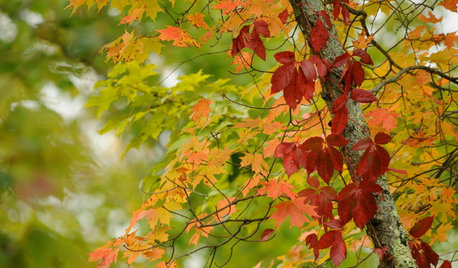Green or Brown
Skyway Gardens
15 years ago
Related Stories

GREENColor Combinations: Brown and Green
Take Your Cue from Nature for the Most Classic Color Combination of All
Full Story
DESIGN DICTIONARYPatina
When metal meets weathering, naturally or not, it might take on a green or brown patina
Full Story0

HOLIDAYSA Violet, Brown, Bronze and White Holiday
7 Great Reasons to Deck the Halls With Unconventional Colors
Full Story
GREENFavorite Color Combinations: Celery and Chocolate
Accent your space with a delicious mix of light green and dark brown
Full Story
CURB APPEALWhen to Paint Your House Brown
Nature loves brown, from rich soil to sunlit sand, and so do home exteriors with a traditional or Craftsman bent
Full Story
GREENOlive Green: Sophisticated or Drab?
Thumbs Up or Thumbs Down: Are These Earthy Greens For You?
Full Story
GREEN8 Green Palettes Worthy of Envy
Softly neutral or bold and bright, green is a surprisingly versatile partner for other colors and many design styles
Full Story
HOLIDAYS15 Spectacular Christmas Palettes Beyond Red and Green
Instead of dragging out holiday decorations in the same old expected colors this year, dare to consider these gorgeous alternatives
Full Story
COLORFall on the Wall: Decorating With Rich Reds, Browns and Oranges
For your interiors, take a cue from nature’s colorful seasonal offerings
Full Story
COLORBest Ways to Use the Neutral Green Color of 2015
Benjamin Moore’s Color of the Year is soft and natural
Full StoryMore Discussions






cowgirl2
digdirt2
Related Professionals
Carlisle Landscape Architects & Landscape Designers · New Bedford Landscape Architects & Landscape Designers · Ferndale Landscape Architects & Landscape Designers · El Segundo Landscape Contractors · Fishers Landscape Contractors · North Chicago Landscape Contractors · Santa Ana Landscape Contractors · Wilton Landscape Contractors · Oxon Hill Landscape Contractors · Batavia Decks, Patios & Outdoor Enclosures · Billerica Decks, Patios & Outdoor Enclosures · Lafayette Decks, Patios & Outdoor Enclosures · Lincoln Decks, Patios & Outdoor Enclosures · Redmond Decks, Patios & Outdoor Enclosures · Southampton Decks, Patios & Outdoor EnclosuresKimmsr
Skyway GardensOriginal Author
robertz6
robinreno
robinreno
Kimmsr
digdirt2
Lloyd
robinreno
Lloyd
robinreno
Lloyd
Lloyd
robinreno
digdirt2
Kimmsr
dchall_san_antonio
Lloyd
robertz6
bpgreen
robinreno
dchall_san_antonio
bpgreen
robertz6
Lloyd
luckygal
bpgreen
dchall_san_antonio
Lloyd
dchall_san_antonio
Lloyd
treeinnj